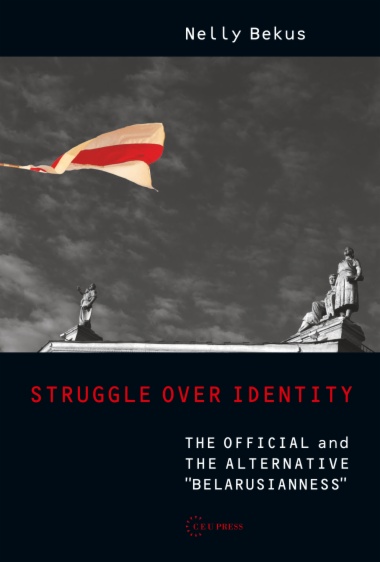Rejecting the cliché about “weak identity and underdeveloped nationalism,” Bekus argues for the co-existence of two parallel concepts of Belarusianness—the official and the alternative one—which mirrors the current state of the Belarusian people more accurately and allows for a different interpretation of the interconnection between the democratization and nationalization of Belarusian society.
The book describes how the ethno-symbolic nation of the Belarusian nationalists, based on the cultural capital of the Golden Age of the Belarusian past (17th century) competes with the “nation” institutionalized and reified by the numerous civic rituals and social practices under the auspices of the actual Belarusian state.
Comparing the two concepts not only provides understanding of the logic that dominates Belarusian society’s self-description models, but also enables us to evaluate the chances of alternative Belarusianness to win this unequal struggle over identity.
- Cover
- Title Page
- Copyright Page
- TABLE OF CONTENTS
- Introduction
- PART I. NATION IN THEORY
- Chapter 1 Nation-Formation Strategies in Contemporary
- Chapter 2 State and Nation
- Chapter 3 Nationalism, Capitalism, Liberalism:
The East European Perspective
- Chapter 4 Nationalism and Socialism: The Soviet Case
- PART II. THE RISE AND DEVELOPMENT OF
THE BELARUSIAN NATIONAL IDEA
- Chapter 5 The First Belarusian Nationalist Movement: Between
National and Class Interests
- Chapter 6 Byelorussian Republic within the Soviet State
- Chapter 7 Post-Soviet Conditions for Independence
- PART III. BELARUSIAN POST-COMMUNISM
- Chapter 8 The Election of the First Belarusian President as
a Mirror of Belarusian Preferences
- Chapter 9 “Labels” of the Belarusian Regime
- Chapter 10 “Triple Transformation” and Belarus
- Chapter 11 Prerequisites of Democratization and
Authoritarianism in Belarus
- PART IV. ARGUMENTS AND PARADOXES
OF WEAK BELARUSIAN IDENTITY
- Chapter 12 Belarus as an Example of National and
Democratic Failure
- Chapter 13 The Russian Factor in Belarusian Self-Perception
- Chapter 14 The Paradox of “National Pride”
- Chapter 15 Paradoxes of Political and Linguistic Russification
- Chapter 16 Lack of Religious Basis for National Unity
- PART V. THE STRUGGLE OVER IDENTITY
- Chapter 17 Two Ideas of “Belarusianness”
- Chapter 18 Belarusian-Specific Nature of the Public Sphere:
“Invisible Wall”
- Chapter 19 Belarusian History: The Alternative and
Official Historical Narrations
- Chapter 20 Political Discourses of the Alternative
Belarusianness
- Chapter 21 National Ideology of the Belarusian State as
a Political Articulation of Official Belarusianness
- PART VI. CULTURAL MANIFESTATION
VERSUS SOCIAL REIFICATION
- Chapter 22 Two Approaches to the Politics of Identity
- Chapter 23 Belaruski Globus: An Encyclopedia of What Existed before Communism
- Chapter 24 The Belarusian National Film Misterium Occupation: Distancing Themselves from Soviets and Russians
- Chapter 25 The “Free Theater” or the Alternative
Belarusianness on Stage
- Chapter 26 Independent Rock Music: Critical Reflection
and Protest
- Chapter 27 Medieval Reenactors: A Manifestation of Belarus’s
European History
- Chapter 28 The Official Politics of Identity: Social
Reification Strategy
- Conclusion
- Bibliography
- Index
- back cover

